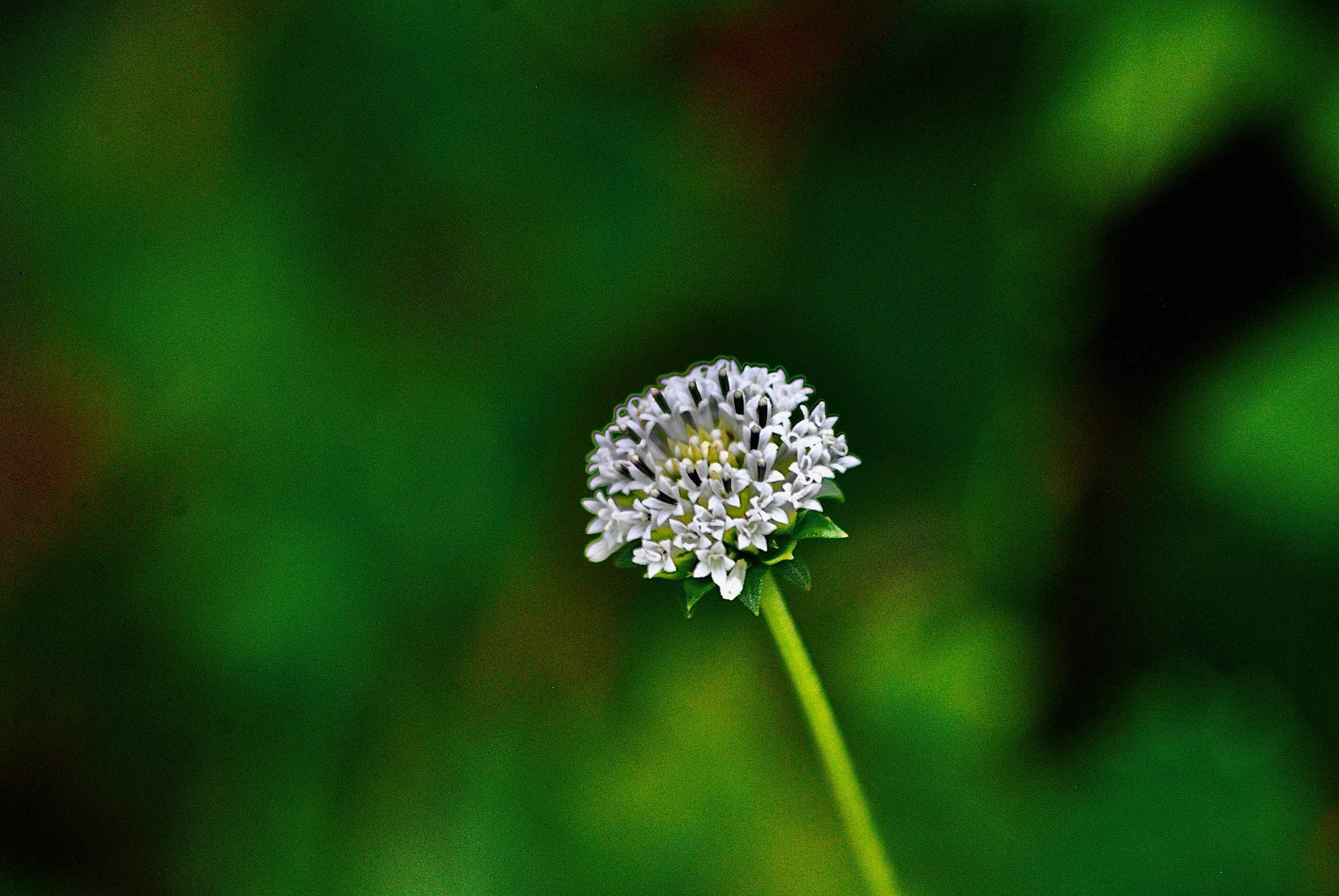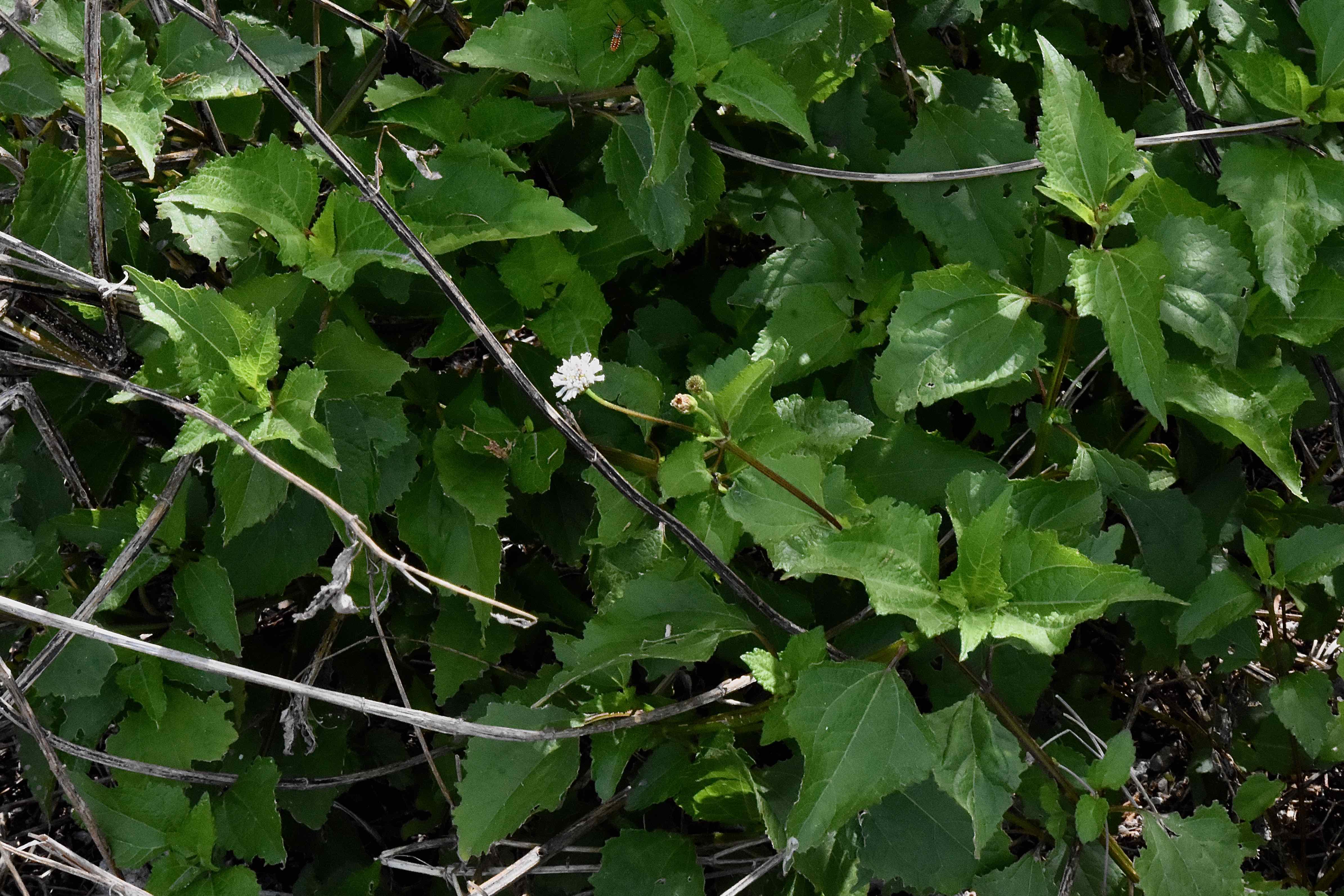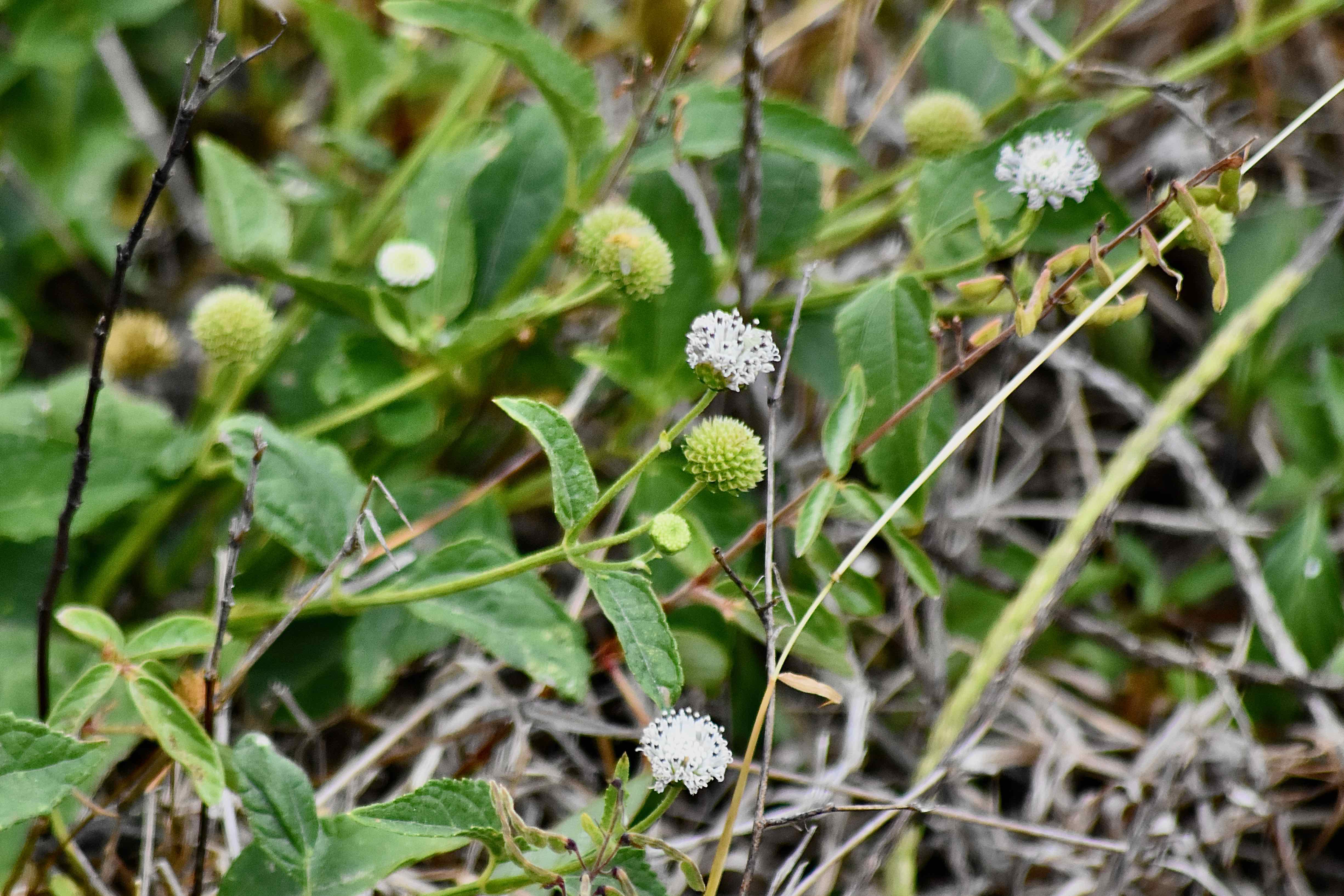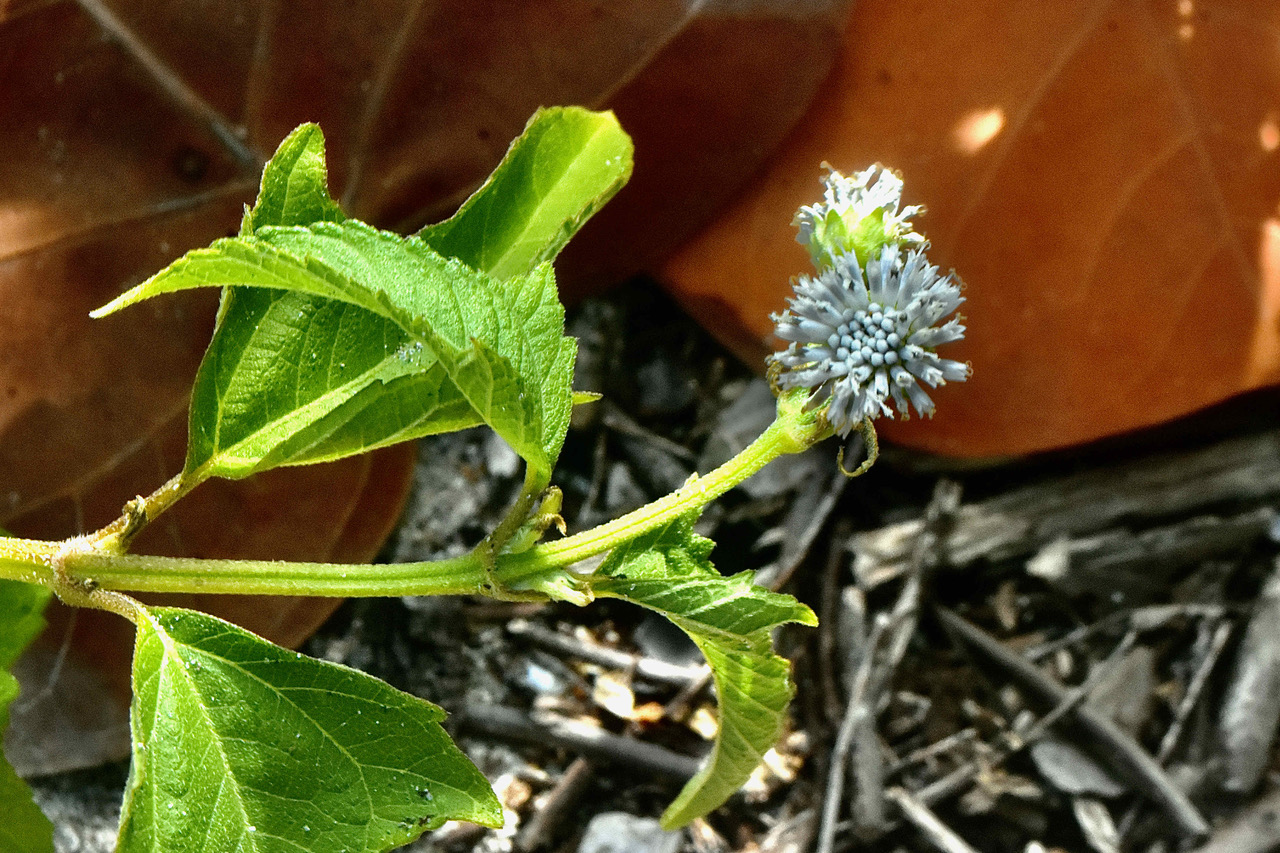
Snow squarestem, photographed at Atlantic Dunes Park, Delray beach, Palm Beach County, in April 2022.
Few plants are better named from a descriptive standpoint than snow squarestem, aka salt and pepper, aka melanthera, aka Melanthera nivea. They all accurately describe the distinctive looks of the plant's flowers.
Take snow squarestem, for instance. The plant has snow-white flower head sitting on top of literally a square stem. Salt and pepper? The snow-white flower head is dotted with black dots, immediately bring to mind the classic seasoning combo.
As for melanthera and Melanthera nivea, they’re really Greek and Latin mashups for the same characteristics. All three common names are commonly used, though snow squarestem might have a slight edge over the other two. Melanthera nivea, of course, is the plant’s binomial or scientific name.
Whichever name you prefer to use — we'll go with snow squarestem — the plant is a Florida native found throughout most of the Sunshine State, including all South Florida counties. Its range extends throughout the Southeast, from South Carolina to Louisiana and in scattered counties along the Mississippi and Ohio river valleys into southern Illinois, Kentucky and Tennessee. It’s also native to the Bahamas, the Caribbean, Mexico, Central America and South America.
Snow squarestem grows between two and four feet tall, with multiple branches and a semi woody stem. The leaves are somewhat diamond or arrow shaped, serrated along the edges, coarse to the touch and with a pointed apex, or tip. They are arranged oppositely along the stem.
The flowers are small but densely packed into heads about an inch or so across. They are rayless, meaning they have no petals. The heads sit atop stems that, true to the name, are square.
More about the flowers: They are snow white, tubular and dotted black by pollen-bearing flower parts called anthers that are the inspiration for both the scientific name and the common salt and pepper. A single head might bear as many as 25 of these tiny florets.
In South Florida, snow squarestem flowers bloom year round. Depending on how far north you go, blooming season is spring into late fall or early winter. Again depending on how far north you go, it can drop its leaves except for a basal rosette in winter; in colder places, it goes dormant, awakening again come spring.
There is a lengthy list of butterflies attracted to snow squarestem’s flowers, including cassius blue, dorantes longtail, gulf fritillary, gray hairstreak and Julia helconian, among many others. However, the list of species that use it as a caterpillar host is on the short side.
As you might imagine, snow squarestem is popular in butterfly gardens. It is an easy plant to grow, but it can sprawl and become on the weedy side.
Other than that, it has no known human uses.
More notes on the name: Melanthera is a mashup of two Greek words, melanos, meaning black, and anthera meaning flower. Black flower, again a reference to the black anthers. Nivea is Latin for snow. Black flower snow, in English. Apparently, while it’s a bad idea to mix metaphors, it’s okay to mix languages in binomial names.
Snow squarestem is a member of Asteraceae, the sunflower family.



